01:05

Finland has officially become a member of NATO, ending decades of non-alignment as the best approach to peace keeping amid the Ukraine conflict.
NATO Secretary General Jens Stoltenberg welcomed the addition on the day of Finland's accession, pointing out that President Vladimir Putin had cited opposing NATO's eastward expansion as one justification for Russia's attack on Ukraine.
READ MORE
Finland becomes 31st NATO member, Sweden awaits ratification
What military strengths would Finland bring to NATO?
Why did Finland wins Türkiye's NATO bid but Sweden is still out?
"He is getting exactly the opposite...Finland today, and soon also Sweden will become a full fledged member of the alliance," Stoltenberg said in Brussels. Indeed, Moscow has already threatened "countermeasures" over the expansion.
But why is Russia so worried about NATO and its development over the last two decades? Here's what you need to know about the Western military alliance and why it is growing amid the conflict.
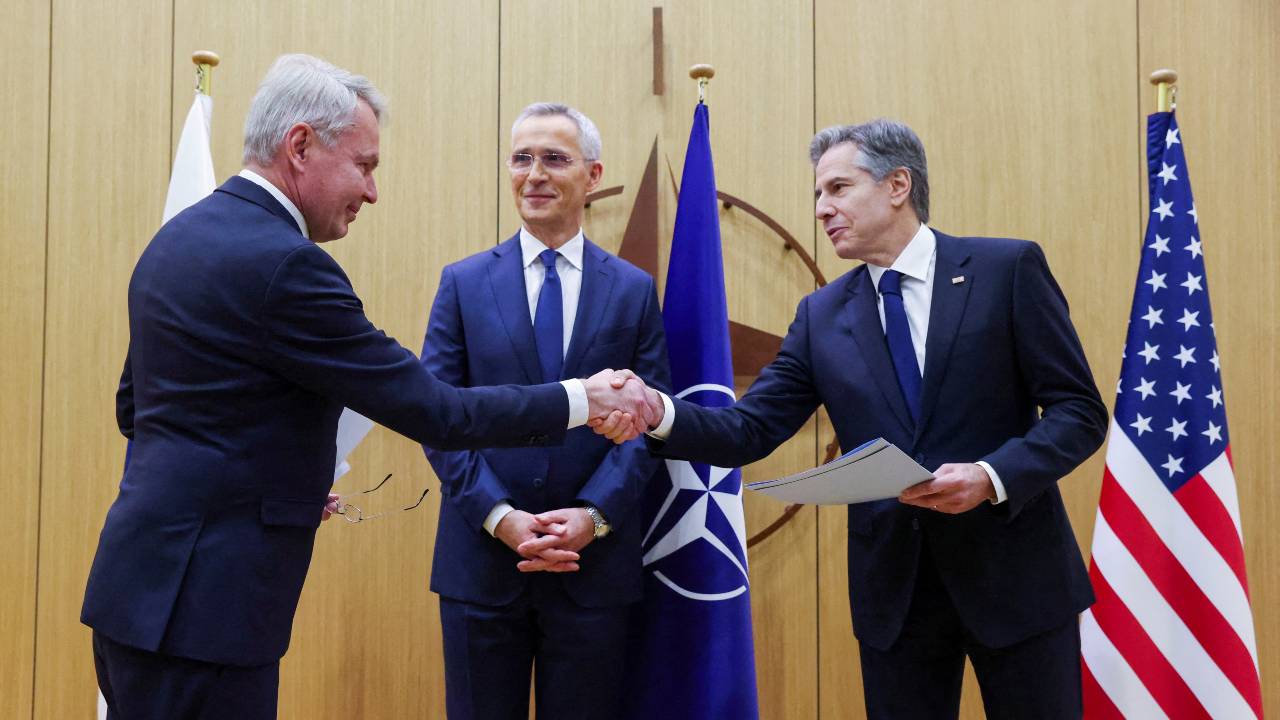
NATO Secretary-General Jens Stoltenberg (C) smiles as Finnish Foreign Minister Pekka Haavisto (L) and U.S. Secretary of State Antony Blinken (R) shake hands at the Alliance's headquarters in Brussels. /Johanna Geron/Pool/Reuters
NATO Secretary-General Jens Stoltenberg (C) smiles as Finnish Foreign Minister Pekka Haavisto (L) and U.S. Secretary of State Antony Blinken (R) shake hands at the Alliance's headquarters in Brussels. /Johanna Geron/Pool/Reuters
What is NATO and who are its members?
NATO, short for the North Atlantic Treaty Organization, is a Western military alliance created in 1949 by 12 countries: Belgium, Canada, Denmark, France, Iceland, Italy, Luxembourg, Netherlands, Norway, Portugal, the UK, and the U.S.
The founders were later joined by Greece, Turkey, and West Germany in the 1950s, and Spain in 1982, but many more countries signed up around the turn of the 21st century.
Members agree to aid one and another in the case of an armed attack against any individual member state, a principal known as Article 5. As the bloc says, "An attack against one Ally is considered as an attack against all Allies."
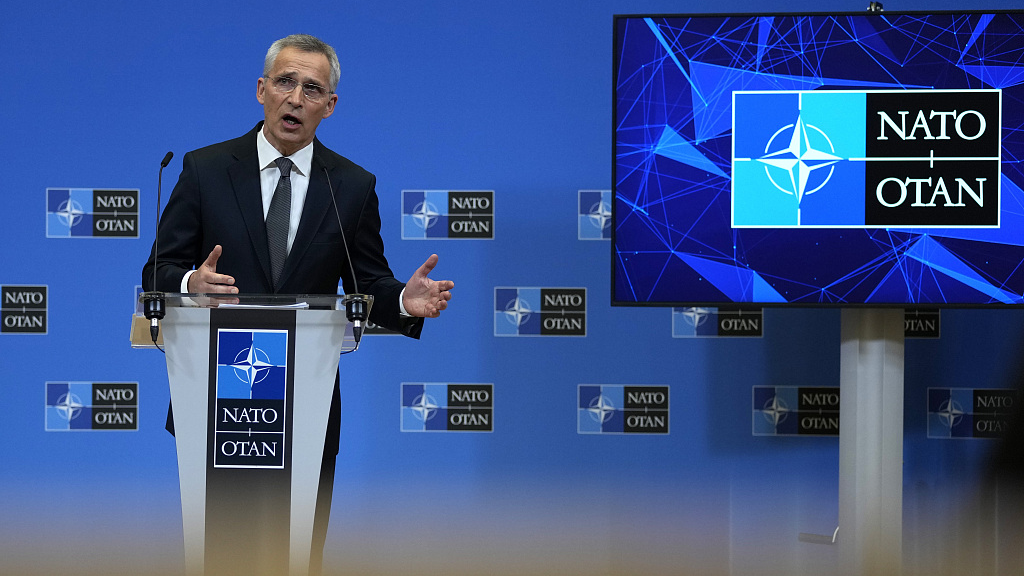
Stoltenberg regularly mentions the alliance's principle that attack on one member is an attack on all. /People Vision/CFP
Stoltenberg regularly mentions the alliance's principle that attack on one member is an attack on all. /People Vision/CFP
Article 5 has only been invoked once in NATO's history – by the U.S., following the attacks on September 11, 2001.
The alliance's original aim was to counter the perceived threat from Soviet Russia and Europe's communist countries. At the time, Moscow responded by creating its own military alliance with other Eastern European states, called the Warsaw Pact.
However, after the Soviet Union's collapse in 1991, several ex-Warsaw Pact countries joined NATO, including Czechia, Hungary, Poland, Bulgaria, Estonia, Latvia, Lithuania, Romania and Slovakia.
The latest members are Slovenia (2004), Albania and Croatia (2009), Montenegro (2017) and North Macedonia (2020). Finland's accession brings the total to 31.
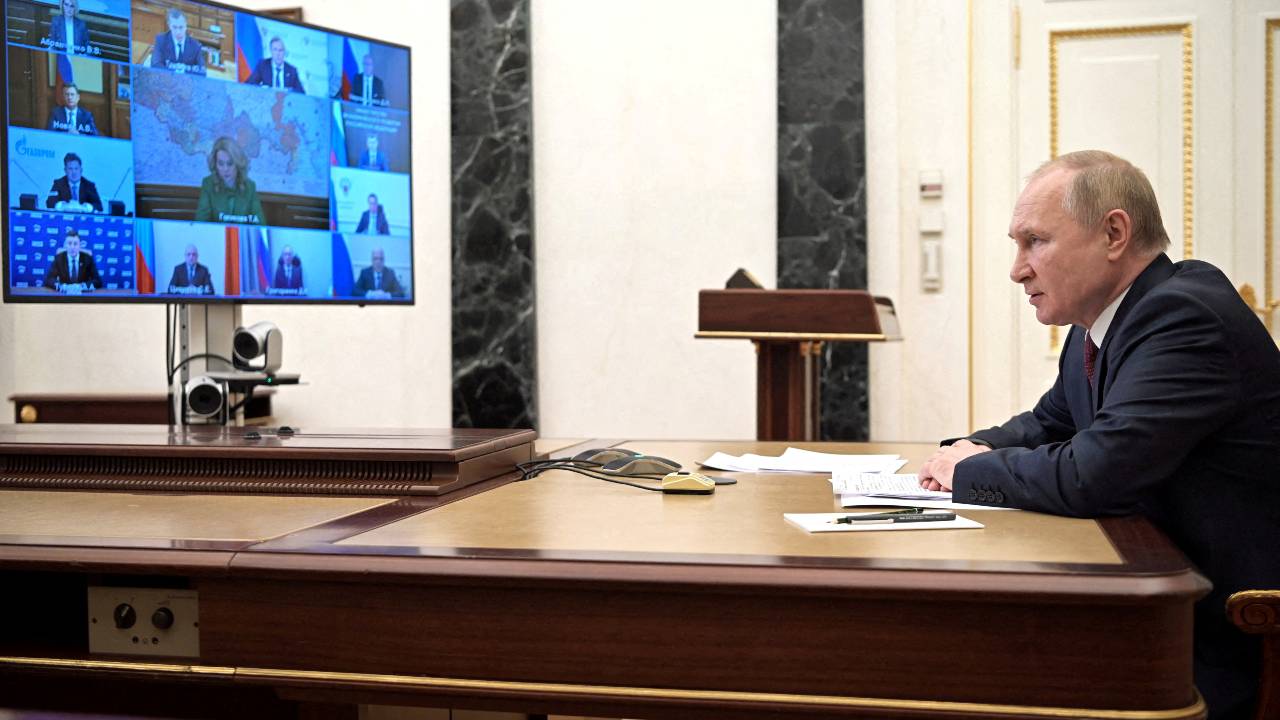
Russian President Vladimir Putin has criticized NATO's expansion in Eastern Europe. /Sputnik/Alexei Nikolsky/Kremlin via Reuters
Russian President Vladimir Putin has criticized NATO's expansion in Eastern Europe. /Sputnik/Alexei Nikolsky/Kremlin via Reuters
Why is Russia opposed to NATO?
NATO's rapid expansion in the early 2000s is seen by Moscow as a provocative build-up of Western troops and weapons on Russia's doorstep. Russia says NATO has been encroaching on its area of political influence by taking on new members from eastern Europe, accusing the West of breaking a promise made in the 1990s not to expand.
Despite warnings, the Western alliance in 2008 offered Ukraine a path towards membership, which Moscow says would bring NATO right into its backyard.
After Russia's incorportation of Crimea in 2014, Kyiv said joining the alliance was a priority. However, Russia's long-standing opposition to Ukraine's accession has stopped this from happening so far. Russia continues to demand that Ukraine should never be allowed to join, an ultimatum which NATO refuses to accept.
In September 2022, Ukraine officially submitted its application to join the alliance. However, as it under direct attack, it is unlikely that NATO members will risk Kyiv joining. Doing so would allow Ukraine to invoke Article 5, bringing many of the world's military super powers into a direct standoff with nuclear-capable Russia.
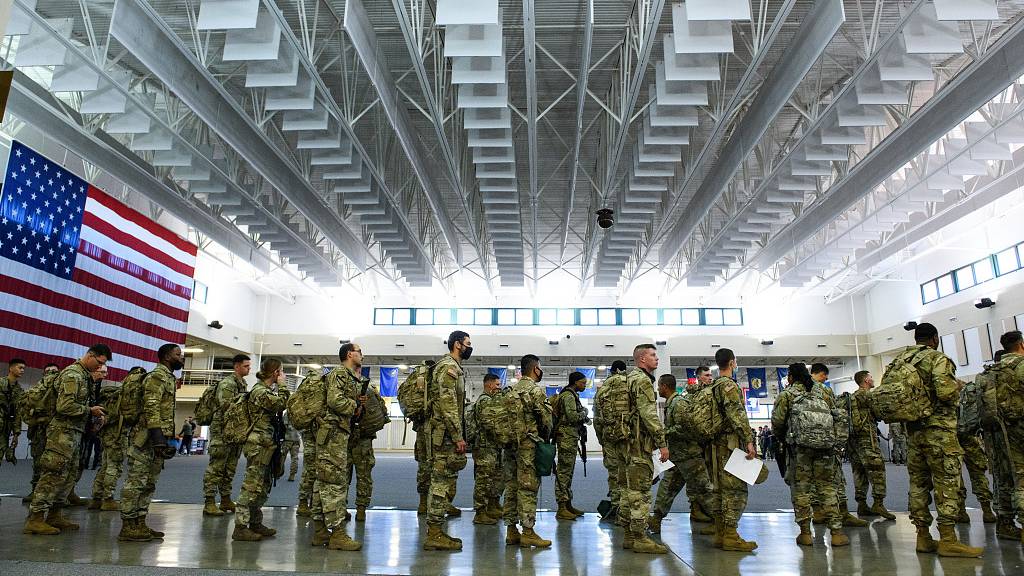
In March 2022, the U.S. sent thousands of soldiers to Germany. /People Vision/CFP
In March 2022, the U.S. sent thousands of soldiers to Germany. /People Vision/CFP
What is NATO's military capacity?
Today, NATO boasts nearly 3.6 million active military personnel combined. That compares to Russia's estimated 1.33 million total military personnel.
Each member state agrees to contribute a different amount of resources, with the U.S. providing the bulk of the soldiers and weapons. Based on NATO estimates for 2021, the U.S. contributed 1.4 million armed personnel, making up 41 percent of its troop numbers.
The alliance's collective military capabilities outnumber Russia in terms of aircraft, at just under 20,700 to around 4,180, and in naval power, with about 2,000 military ships, to some 600. Russia's main battle tanks are more competitive, however, with 12,566 units to NATO's 12,408 as of 2023, according to the Statista Research Department.
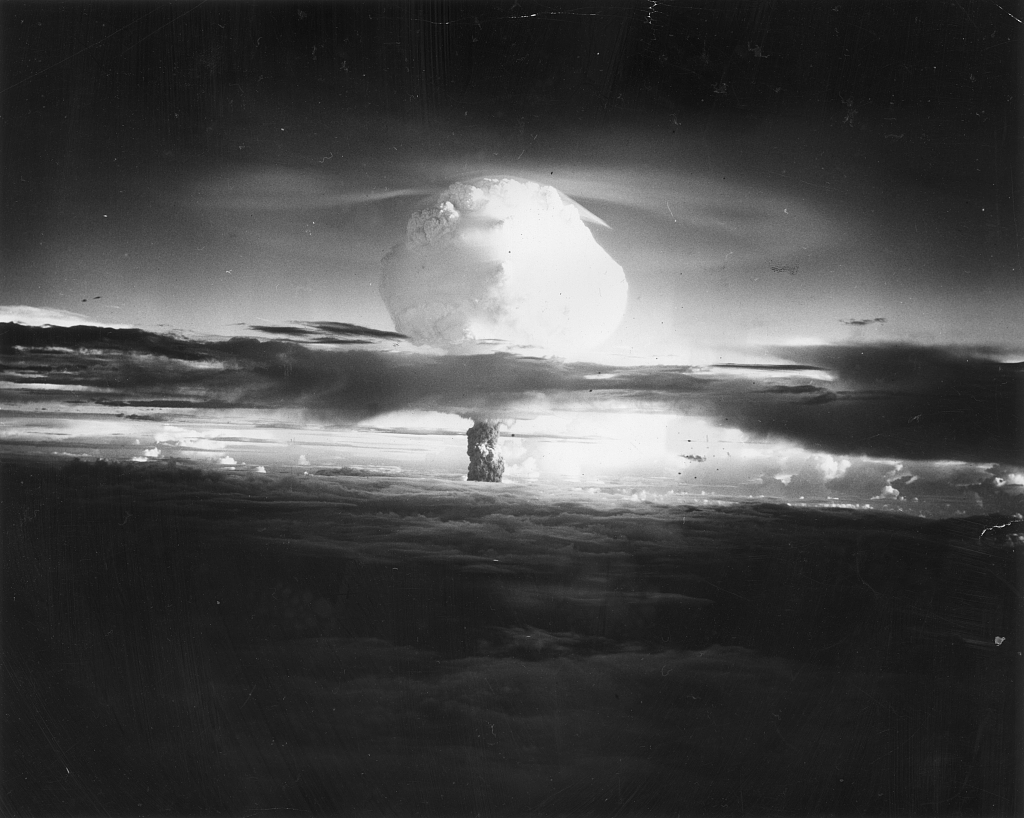
On November 1, 1952, the U.S. successfully tested its first hydrogen bomb on Enewetak Reef, Marshall Islands, in the Pacific Ocean. /CFP
On November 1, 1952, the U.S. successfully tested its first hydrogen bomb on Enewetak Reef, Marshall Islands, in the Pacific Ocean. /CFP
Which NATO countries are nuclear armed?
Three NATO members – the U.S., France and the United Kingdom – have nuclear weapons. NATO describes them, particularly those of the U.S., as "the supreme guarantee of the Alliance's security."
The U.S. has the largest nuclear force of the three, with about 5,800 nuclear warheads. France is thought to have almost 300 warheads, and the UK allegedly has about 215. Exact figures are not easily available as nuclear nations often keep information on their nuclear programs under wraps.
In comparison, Russia is estimated to possess 5,977 nuclear warheads as of 2022, thought to be the largest stockpile of nuclear warheads in the world.
NATO says that the alliance's nuclear deterrence relies on U.S. nuclear weapons to be deployed in Europe.
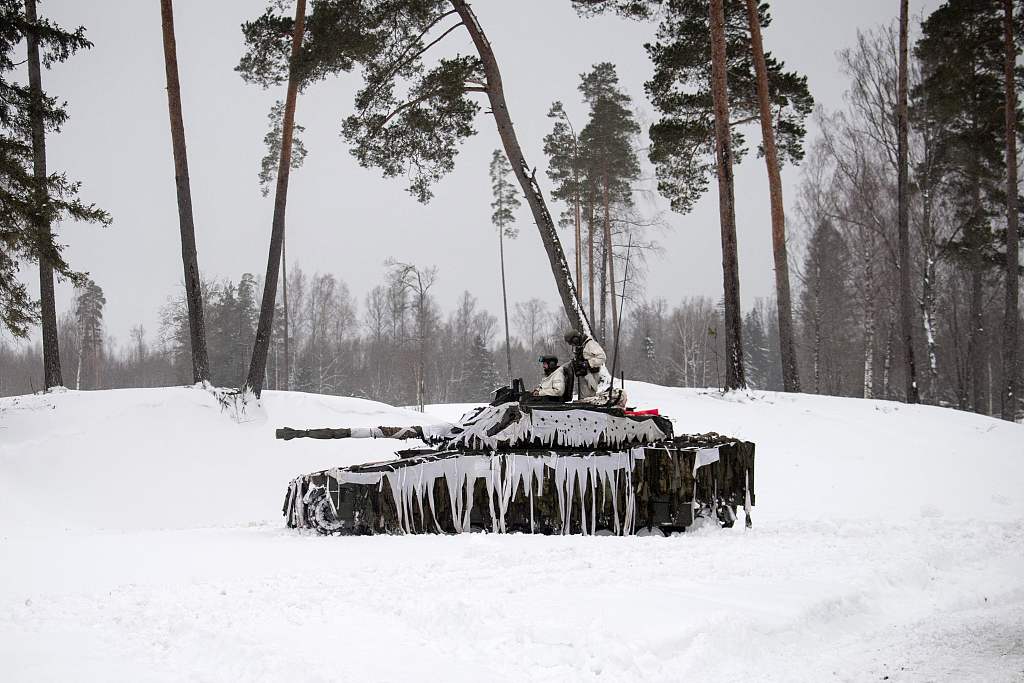
British soldiers participate in NATO's EFP operation at the Tapa military camp in Estonia. /People Vision/CFP
British soldiers participate in NATO's EFP operation at the Tapa military camp in Estonia. /People Vision/CFP
How many troops are in Eastern Europe?
Even prior to the escalation in Ukraine, NATO already had a large number of soldiers on the ground in Europe, spreading all the way from the Baltic republics in the north to Romania in the south.
Stationed there since 2014, after Russia's occupation of Crimea, NATO has now sent large numbers of its 40,000-strong Response Force to Eastern European countries that border Russia and Ukraine.
It has 100 fighter jets on high alert and 120 ships patrolling the seas near the conflict.
The U.S. has said it will send more troops to Europe - joining the four multinational battlegroups already set up in in Estonia, Latvia, Lithuania and Poland, and the multinational brigade it has in Romania.
There are currently an estimated 100,000 U.S. service members deployed across Europe.
Subscribe to Storyboard: A weekly newsletter bringing you the best of CGTN every Friday